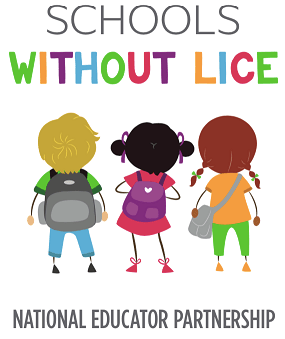How to Check for Lice on Your Own Head
If one of your children has lice, it’s important to do a head check on yourself, as well as all the other members of your family, in order to detect lice early and prevent a full-blown infestation. Many people feel a bit apprehensive about checking their head for lice for the first time and are a bit unsure of where exactly to start. We’re here to outline some tips for how to check your own head for lice—tips that you can also use when checking other family members.
How to Check Your Own Head for Lice
Checking a child’s head for lice tends to be a little easier than checking your own, since you can lean in for a close look while working. However, the steps for a lice check are the same regardless of whose head you’re checking. In order to check your own head for lice, follow these steps:
- Work with hair when it’s damp, such as after a bath or shower.
- Using a detangler will help the comb glide through the hair more easily, especially if you have wavy or thick hair. Apply your detangler of choice and comb it through completely.
- Now grab your nit remover comb and lay it flat against your head at the root of your hair.
- Glide the comb all the way from the scalp and roots down to the ends of your hair.
- For short or medium hair, comb all your hair to the right, then back to the left. Repeat by combing front to back and back to front. For long hair, you’ll part hair down the middle. Place one side in a ponytail while you comb through the loose side. Then switch.
- Pause about every 5 strokes to wipe the comb onto a white paper towel and inspect it check for nits/lice.
What Exactly Am I Looking For?
A critical part of knowing how to check for lice on your own head is knowing what to look for. When checking for lice, you’re primarily looking for three things: nits, nymphs, and adult lice.
- Adult Lice: Adult lice are the easiest to spot. You’ll see small bugs with legs, and they can be dead or alive. They are grayish tan, and are typically the size of sesame seeds.
- Nymphs: Nymphs are immature lice that have just hatched. They have the same shape as adult head lice, but are much smaller—about the size of a pinhead. Nymphs start out very light gray or tan, but darken as they start feeding and maturing into adults. Nymphs reach maturity 9-12 days after hatching.
- Nits: Nits are the eggs laid by female lice. They are extremely small (barely visible to the naked eye) and oval-shaped, and at first glance can just appear like grains of dirt or sand. Nits are comprised of a translucent outer casing that houses a baby louse (nymph) inside. They start out clear, and then darken to a light tan as the nymph grows. After the nymph hatches from the egg, the empty casing can appear clear again, or white. Nits will be “glued” to the hair shaft, close to the scalp for warmth, which is why it is important to make sure you position your comb at your scalp so as to not miss them. Note that it is just as important to identify nits as it is to identify live lice, because even if you kill the adult lice, if any nits remain, they’ll hatch after about 8-9 days, and you’ll be re-infested.
Head Lice Clinics in Jacksonville and Orlando, FL, and Savannah, GA
Learning how to check for lice on your own head can be difficult. At Fresh Heads Lice Removal, we are experts at identifying and treating lice. Our professional technicians and experts take a safe, effective and affordable approach to treatment, stopping lice in their tracks using cutting-edge technology. If you are interested in learning more about our lice treatment options, contact us today.
Schools Without Lice
Our goal at Fresh Heads Lice Removal is to get rid of lice in schools across the United States. That’s why we partnered with the Lice Clinics of America to create the Schools Without Lice program. This program gives nurses and teachers free resources, screenings, and treatments. Together, we can have schools without lice!
















Leave a Reply
Want to join the discussion?Feel free to contribute!